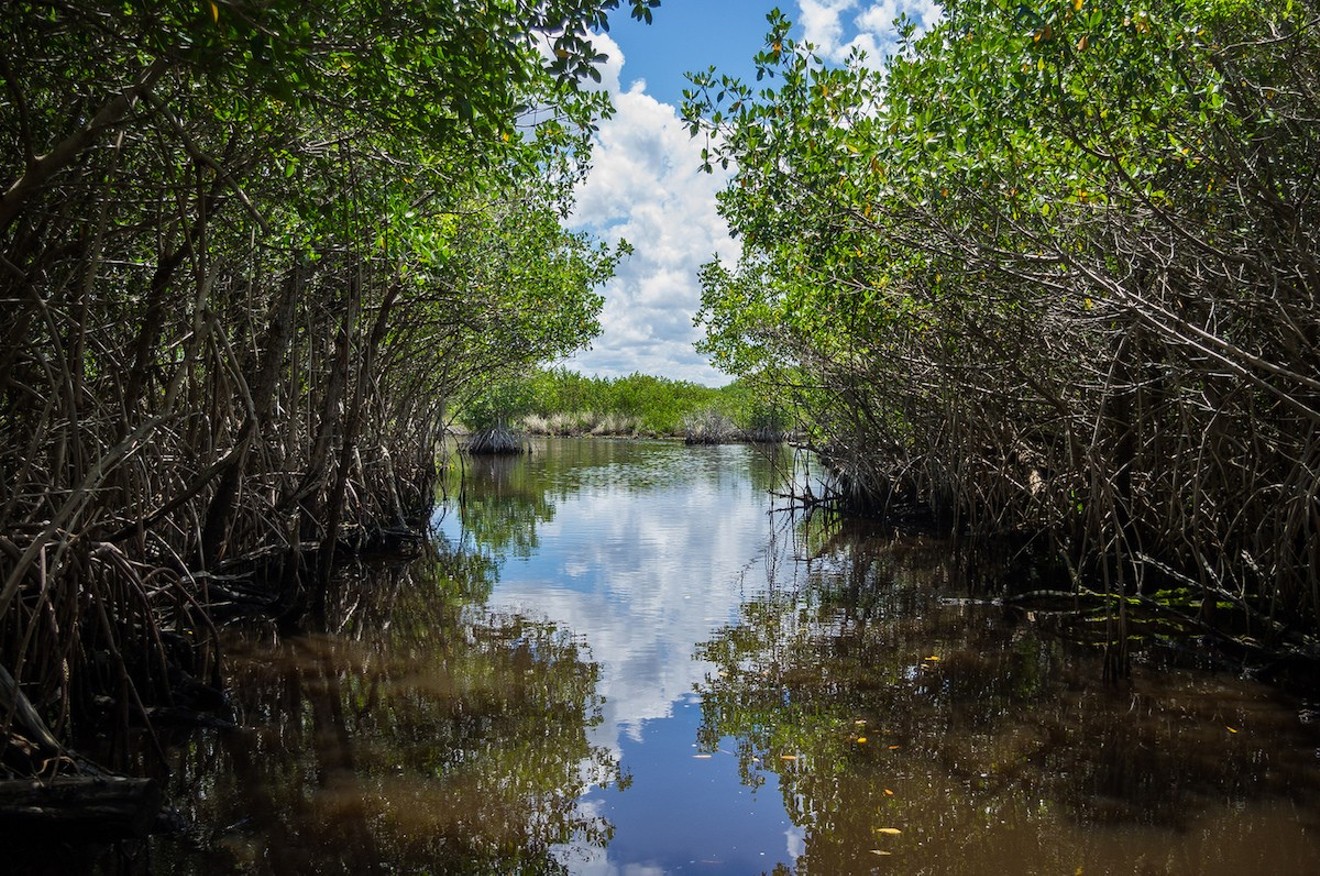Florida's largest lake undergoes a metamorphosis every summer as a pungent odor fills the air, and the water turns a bright, split-pea green. For at least the last four years, Lake Okeechobee has become rancid with toxic blue-green algae blooms (cyanobacteria).
The lake is the gateway to the Everglades. Historically, water that overflowed Florida's Inland Sea during the summer rainy season would travel south to replenish the tropical wetlands with freshwater before ultimately mixing with the salt waters of Florida Bay. A century of agricultural development and water diversion, however, has disrupted the watershed and degraded the environment.
Scientists are currently testing cyanobacteria in the Okeechobee watershed to better understand how harmful algae blooms develop and why. The U.S. Geological Survey (USGS) has partnered with the South Florida and Caribbean Cooperative Ecosystems Studies Unit to install 12 fiberglass cylinders in the Caloosahatchee River. A specific concoction of chemicals — such as nitrate, phosphorus, and ammonia — have been added to each enclosed tank. Subsequent water quality tests may soon reveal how nutrient pollution affects the blooms that pop up in Florida's waters every summer.
Anne Schechinger, senior analyst at the Environmental Working Group (EWG), says farm runoff had already been linked to algal blooms. Phosphorus and nitrate are produced in a number of agricultural chemicals and byproducts. Nitrate is common in fertilizer, and both nitrate and phosphorus are found in animal manure. Algae blooms result when these nutrients get into the water and warm water.
What is still unknown is why certain types of blooms are benign while others are toxic.
"Nobody knows why some algae is toxic and others aren't," she says. "Is it pesticides? Nutrients? The amount of nutrients?"
No government agency tracks algae blooms across the United States, but the EWG has been compiling a list of events mostly based on media stories. They began tracking algae blooms in 2010 when there were 38 local reports of algae blooms. By 2018, there were 398.
Algae and bacteria serve as the foundation of the aquatic food chain, but in the right set of conditions, they can also severely damage ecosystems. Algae can quickly become the dominant species in a marine environment, creating a colorful and sometimes toxic blanket across the water. Cyanobacteria, or blue-green algae, is a photosynthetic and prehistoric nuisance that transforms water into green, toxic slime. Large aquatic algae blooms like cyanobacteria obstruct oxygen, killing fish and other aquatic animals. NOAA predicts agricultural runoff in the Mississippi River will create a "dead zone" — an area in the ocean with little to no oxygen to sustain fish— the size of Massachusetts in the Gulf of Mexico this summer.
As a year-round growing state, Florida is it's own unique puzzle. It's not just climate change exacerbating blooms, but septic issues, unregulated water management, and a system that's totally loaded with phosphorus. When sugarcane and tomato fields flood, water drains back into Lake Okeechobee and adds more phosphorus to it. Phosphorus stays in the environmental for a long time, attaching itself to the bottom of the lake. If a hurricane sweeps through, all of that phosphorus gets churned up.
"We focus a lot on the recreational impact of algae blooms, but there are also issues with toxins getting into our drinking water," says Schechinger. Water can have cyanotoxins present before it becomes smelly or bright green. Communities in the midwest have even found cyanobacteria underneath the ice in winter. Cyanotoxins can also be airborne, travelling miles away from their original water source.
Within the last month, cyanobacterial blooms have been reported up and down the Atlantic Coast from Vermont to Lake Okeechobee. Every Mississippi state beach was closed over Independence Day weekend due to a giant blue-green algae bloom along the Gulf Coast. The heavy rains of Tropical Storm Barry may have exacerbated the situation by flushing Louisiana's agricultural runoff into the Gulf. Harmful algae blooms have been increasing throughout the United States in the last decade, and they are only expected to become more frequent with climate change, according to the Centers for Disease Control and Prevention (CDC).
Humans and animals that ingest water contaminated with blue-green algae can become seriously ill. Cyanotoxin exposure can cause skin rashes, stomach cramps, nausea, and vomiting, according to the Florida Department of Health, as well as respiratory issues and problems with the liver and nervous system. Algae blooms have been linked to cancer in humans, and death in pets.
"Cyanotoxins can be really, really dangerous," says Schechinger. "It's a scary thing for humans, pets, and the ecosystem."
[
{
"name": "GPT - Billboard - Slot Inline - Content - Labeled - No Desktop",
"component": "16971022",
"insertPoint": "2",
"requiredCountToDisplay": "2"
},{
"name": "Editor Picks",
"component": "15769925",
"insertPoint": "4",
"requiredCountToDisplay": "1"
},{
"name": "Inline Links",
"component": "16575154",
"insertPoint": "8th",
"startingPoint": 8,
"requiredCountToDisplay": "7",
"maxInsertions": 25
},{
"name": "GPT - Rectangle 2x - Slot Auto-select - Labeled",
"component": "15782206",
"insertPoint": "8th",
"startingPoint": 8,
"requiredCountToDisplay": "7",
"maxInsertions": 25
},{
"name": "Inline Links",
"component": "16575154",
"insertPoint": "8th",
"startingPoint": 12,
"requiredCountToDisplay": "11",
"maxInsertions": 25
},{
"name": "GPT - Leaderboard to Tower - Slot Auto-select - Labeled",
"component": "15782207",
"insertPoint": "8th",
"startingPoint": 12,
"requiredCountToDisplay": "11",
"maxInsertions": 25
}
]












